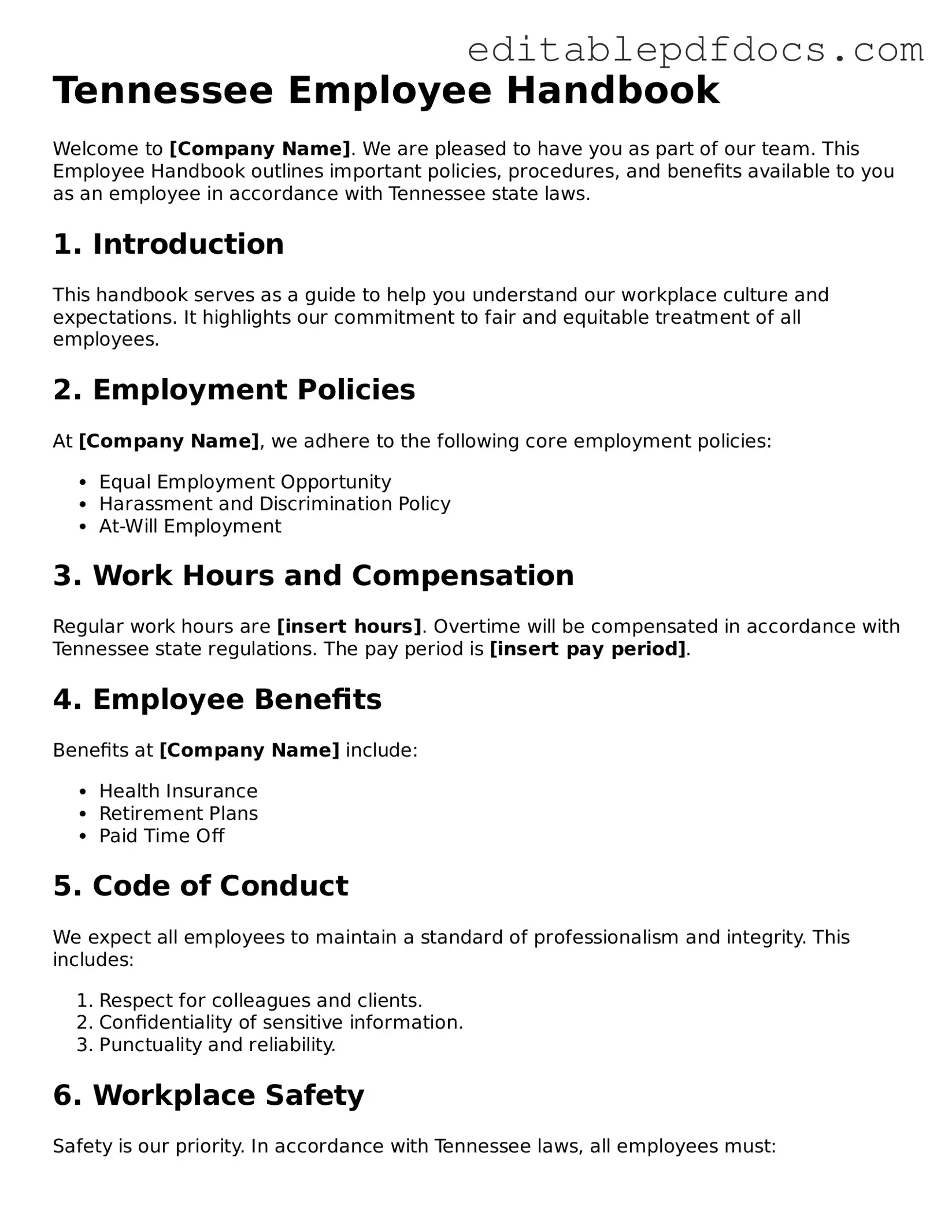The Tennessee Employee Handbook is an essential document for both employers and employees, serving as a comprehensive guide to workplace policies and procedures. It outlines the rights and responsibilities of employees while providing clarity on company expectations. Key aspects of the handbook include information on employment policies, workplace conduct, benefits, and leave policies. Additionally, it often addresses issues such as anti-discrimination measures, safety protocols, and disciplinary procedures. By clearly communicating these elements, the handbook helps to foster a positive work environment and ensures that employees are informed about their roles and the resources available to them. Furthermore, a well-structured employee handbook can protect employers by establishing clear guidelines that can be referenced in the event of disputes or misunderstandings.
